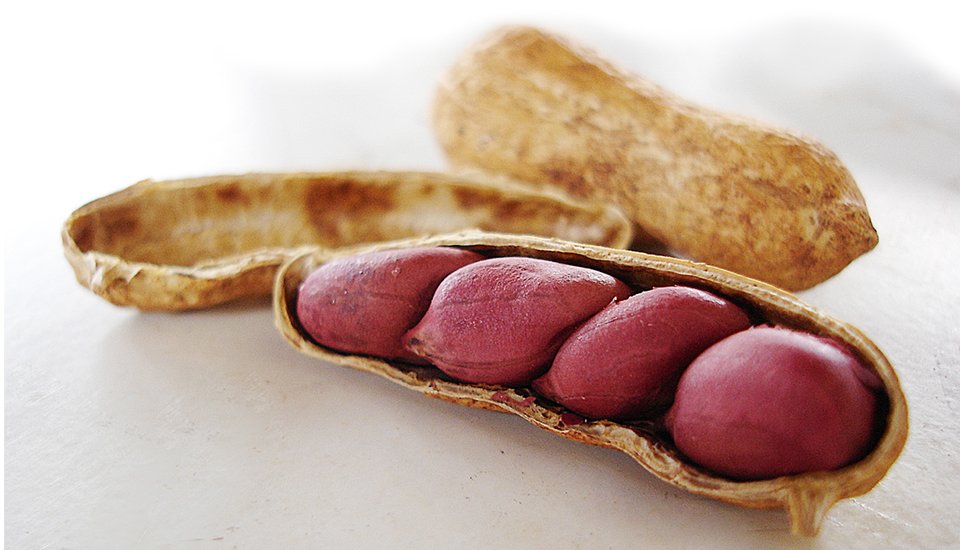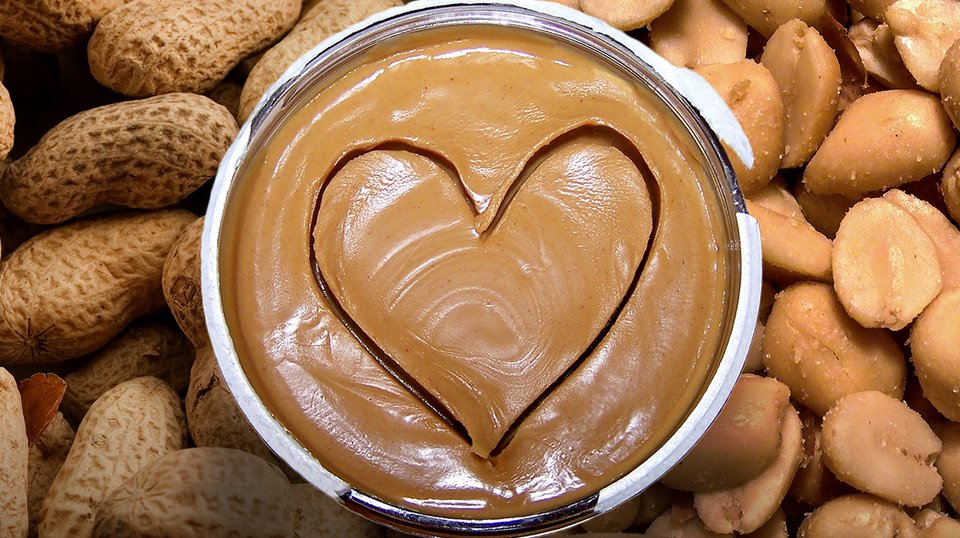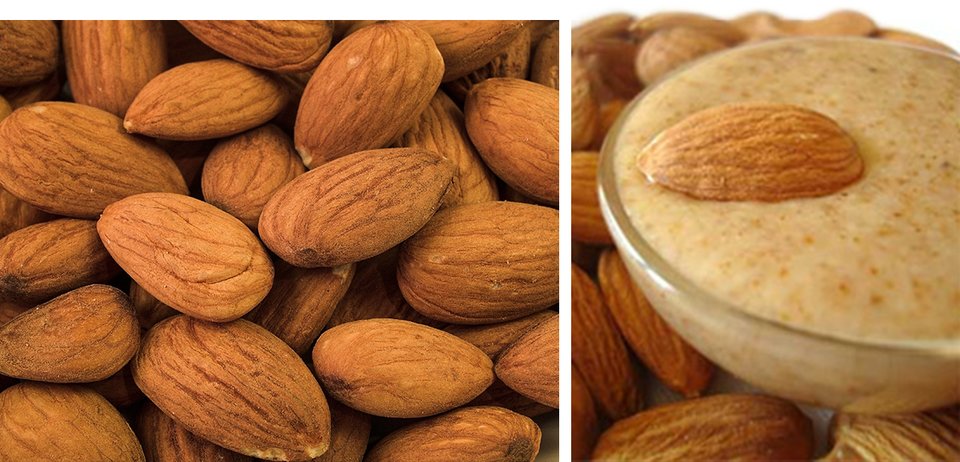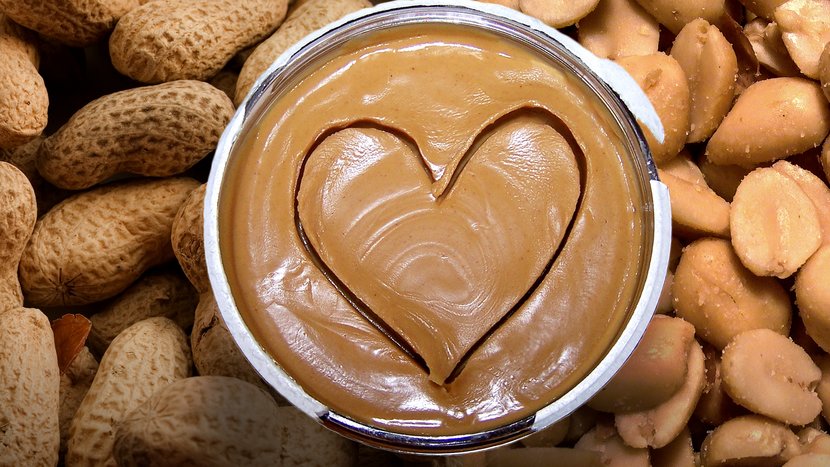Peanut butter has a special place in my heart, and I'm confident I'm not the only one. Although perhaps known best for pairing beautifully with your favorite fruit jelly and two slices of bread, or being surrounded by melt-in-your-mouth chocolate, these are definitely not the only ways to use it. It's right at home with sharp cheese, tart apple, or in a spicy sauce on chicken skewers. The crazy among us—i.e., me—have been known to use it as a condiment on a hamburger.
But peanut butter's benefits don't end with its pallet-pleasing power. It's actually a healthy fat. That's right, I said healthy.
Despite the stick-to-your-mouth goodness, too many people leave peanut butter sticking to the grocery-store shelves for fear that it will make them fat. But that's not the whole story. Spoon yourself out of this creamy conundrum and get the scoop on this much-loved, but often misunderstood, spread.

Peanut butter's benefits don't end with its pallet-pleasing power. It's actually a healthy fat.
The Unshelled Truth
The major reason peanut butter seems to be placed on dieters' "naughty" list is because of its high calorie content. A mere two tablespoons contains 200 calories, which, depending on your daily intake, could make up as much as 10 percent of your daily calorie allotment. A few heaping spoonfuls throughout the day, and you may quickly find yourself at half of your daily calorie allotment. Well, nuts (or legumes, as it were).News Flash
You need adequate fats at all calorie levels in order to feel good and stay healthy!Sure, peanut butter is high in calories, but that's no reason to completely dismiss it from your diet. At the end of the day, your weight is dictated by calories in versus calories out. Whether you've allotted yourself 1,800, 2,400, or 3,000 calories per day, peanut butter can absolutely fit. Its high fat content might even help you feel more satiated with fewer calories. As with all things in life, moderation is key.
Here's what not to do: boost your peanut butter intake through the roof, thinking it's a protein source. At about 8 grams of protein per two-tablespoon serving, PB is nothing to sneeze at, but it's a better fat than a protein. Eat it for what it is.
Saturated Fat

Beyond the caloric load it brings, peanut butter's saturated-fat content is a concern for some people. Saturated fat was once deemed the demon of heart disease and was portrayed as evil by the fat-loss community. For decades, this caused a huge hit to peanut butter's social following, particularly the whole-fat variety. But that doesn't mean the fear was justified. And as is often the case, the low-fat "improvement" is worse than the original.
The truth is that saturated fat is not the root of all evil. In fact, it's actually beneficial to the production of crucial hormones and vitamins such as testosterone and vitamin D.[1,2]
Peanut butter also contains an abundance of "good" fats, or, monounsaturated and polyunsaturated fats. One serving has 8 grams of monounsaturated fats and 4 grams of polyunsaturated fats. These "good" fats help lower cholesterol, reduce heart disease, and lower blood pressure.[3] They're also anti-inflammatory, which may help with recovery and reduce your risk for metabolic syndrome.[4]
Peanut Butter Shopping Guide
In a perfect world, the only ingredient in peanut butter would be peanuts. After all, peanut butter is just mashed up peanuts, right? Of course, that's not how it plays out, and not all nut spreads are created equally.When it comes to peanut butter, don't let the "low-fat" claim on the label lure you. Most low-fat versions make up for the cut by adding in sugar and partially hydrogenated oils—or trans fats—which are detrimental to your health. Many of us grew up on these overly sweet variations, so you may have to retrain your palate, but it's worth it. Reap the benefits of a full-fat, full-flavor nut butter!
Likewise, you may find that one of the new flavored peanut butters catches your attention, such as cinnamon raisin, white chocolate, or banana. Keep in mind that this added flavor almost always comes at the expense of added sugar and carbohydrates, as well as other shelf-stabilizing agent.
Keep in mind that this added flavor almost always comes at the expense of added sugar and carbohydrates.
The Competition Almond Butter
Over the past few years, almond butter has often inched ahead of the generic peanut in terms of perceived health benefits. Some people argue that a miniscule percentage difference in key nutrients such as vitamin E and iron makes the scales fall in almond butter's favor. Almonds offer 25 milligrams of vitamin E, while peanuts offer 10 milligrams per serving, which is still 50 percent of the recommended intake.
Almond butter has often inched ahead of the generic peanut in terms of perceived health benefits.
The truth is, both butters are interchangeably great and offer different healthy fats and essential nutrients. Up-and-comers like cashew butter also have a lot going for them. Try them all; each nut butter is great. But it's also OK if, like me, peanut butter will always have your heart.
https://www.bodybuilding.com/content/is-peanut-butter-healthy.html
Do you eat peanut butter. Leave your comment below.
Click Here For More Articles



No comments:
Post a Comment